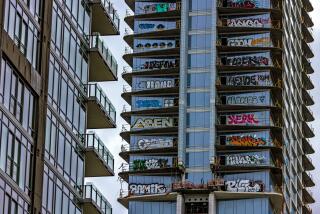Development’s name alone can change home prices
Most builders think naming their subdivisions ranks up there in importance with high-quality construction.
Now there’s a bit of science that shows just how much a couple of key words can add to the typical developer’s bottom line.
Home buyers pay an average of 4.2% more when the development has the word “country” in the name, according to a study by two researchers at the University of Georgia. And if it has the term “country club” as part of its name, buyers will pay 5.2% on top of that.
That’s a total of almost 10% more that people are willing to pay for the prestige associated with the term “country club.”
A joke? Hardly. The study, whose results were published last year in the Journal of Real Estate Research, is a serious investigation of sales in the Baton Rouge, La., area over 15 years. It carefully controlled for such variables as location, number of bedrooms and bathrooms, and days on the market.
“This is the first study to find through empirical research that buyers are willing to pay more for certain property names, with all other attributes of a house being equal,” the paper said. “In fact, buyers of more expensive houses may be willing to pay more for a name that conveys prestige than they are willing to pay for a good school for their children.”
No wonder, then, that builders and their marketing teams become hung up over what to call their communities.
But there is no tried-and-true naming method. Fifield Cos. took an interesting approach in naming K2, its new 34-story apartment tower in downtown Chicago. K2 in Asia is one of the tallest mountains on Earth. The Chicago building, although certainly not the tallest in the city, will have “the highest level of amenities, architecture and finishes,” the developer says.
Often builders resort to the standards — station, park, commons, woods, village, farms, hunt, square and gardens. Some look to history for a name, while others use location or a characteristic of the property. A few pick a name that immortalizes themselves or their loved ones.
Reston, one of the country’s original “new towns” in Virginia, takes its name from the initials of its founder, Robert E. Simon, as in “RES-town.”
The Irene, an apartment building in Chevy Chase, Md., was built by Abe Pollin, who went on to own Washington’s professional basketball and hockey teams. Pollin named the building after his bride.
The nearby Elizabeth also was named for its builder’s wife. Glad he didn’t use a more familiar form of her name, though. Somehow, “I live at the Betsy” doesn’t sound nearly as chic.
Simplicity often rules the naming process. But sometimes the simplest name doesn’t work. For example, a place that was originally called Crimson Oaks had to change its name to Crimson Oak when it was discovered there was only a single oak on the property. But Orchard Pond never did have a pond.
Name changes sometimes do wonders for a project. While named Andrews Manor, a town-house community near Andrews Air Force Base in suburban Maryland was a slow seller. But as Canterbury Court, which it later became, it really took off. The builder’s ad agency swore the name was the only change.
Of course, a community’s name should meet certain criteria. One is that it should be easy to pronounce, which is where a New England-bred developer who prided himself on building authentic colonial houses went wrong. For one of his projects he picked the name Falmouth, which is pronounced “fall muth” in Massachusetts. But locally, the community became known as “foul mouth.”
Distributed by Universal Uclick for United Feature Syndicate.






